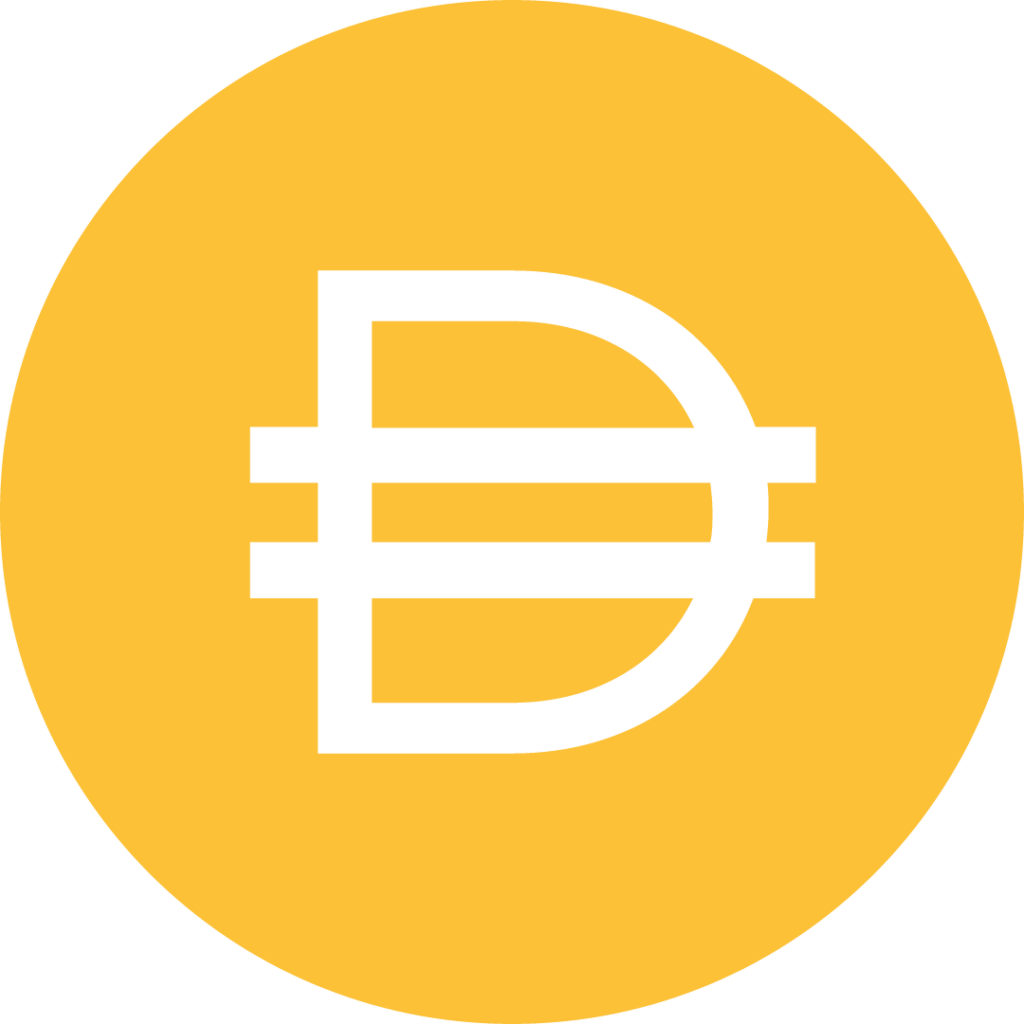Best Stablecoins in 2024: Bringing Stability in Crypto
Stablecoins have emerged as a vital component of the volatile crypto space, especially for trading. But with so many stablecoins out there, how do you pick the best one? That is where our carefully crafted list of best stablecoins in 2024 comes in.
In this guide, we will quickly go over what stablecoins are and how they work, factors to consider when choosing a stablecoin, and a diverse list of the best stablecoins of 2024.
What are Stablecoins and How Do They Work?
Stablecoins are cryptocurrencies designed to maintain a steady value, typically pegged to a real-world asset like the US dollar, a basket of currencies, or even commodities. This stability sets stablecoins apart from their more volatile counterparts like Bitcoin or Ethereum.
The mechanics behind stablecoins vary, but they generally operate through three primary mechanisms:
1. Collateralized Stablecoins: These are backed by real assets, like fiat currency or other cryptocurrencies, held in reserves. Each coin issued is matched by a corresponding amount of collateral, ensuring that the stablecoin’s value remains stable.
Examples: Tether (USDT) and USD coin (USDC)
2. Algorithmic Stablecoins: These rely on smart contracts and algorithms to control the supply of coins in circulation. When the price deviates from its target, the algorithm brings it back in line by increasing or decreasing the supply. As the Terra crash showed, these are not always the most reliable.
Examples: Dai (DAI) and Ampleforth (AMPL)
3. Hybrid Stablecoins: Combining elements of both collateralized and algorithmic stablecoins, these aim for the best of both worlds, offering stability while potentially being more efficient.
Examples: sUSD (Synthetix USD) and FRAX (FRAX)
Stablecoin Use Cases
Stablecoins are versatile digital assets with a wide range of use cases in the cryptocurrency and broader financial markets. Some common use cases include:
Trading: Traders can easily move in and out of positions without needing to convert their assets into traditional fiat currencies, which can be slower and incur additional fees.
Cross-Border Trade: Individuals and businesses engaged in international trade can use stablecoins to settle transactions and invoices quickly and cost-effectively. Users can send stablecoins across borders with minimal fees without being subject to foreign exchange rate fluctuations.
Hedging: Crypto market participants, including miners and businesses, use stablecoins to hedge against the inherent price volatility of cryptocurrencies. They can lock in the value of their holdings without converting to fiat currencies.
DeFi (Decentralized Finance): Stablecoins are a fundamental component of the DeFi ecosystem. They are used for lending, borrowing, yield farming, liquidity provision, and as collateral in DeFi protocols.
Micropayments: Stablecoins are suitable for making small, quick payments for online services, digital content, or in-game purchases without the fees associated with traditional payment methods.
Tokenized Assets: Stablecoins can represent ownership in real-world assets like real estate, stocks, and commodities.
Store of Value: For individuals in regions with high inflation or economic instability, stablecoins can provide a secure store of value. Users can convert their local currency into stablecoins to protect their wealth from devaluation.
Fundraising and Token Sales: Some blockchain projects use stablecoins to raise capital through Initial Coin Offerings (ICOs) or token sales to maintain price stability during the fundraising period.
How to Choose the Best Stablecoins in 2024
Choosing the best stablecoins is slightly different from choosing the best cryptocurrency, as they both serve different purposes. The following are some key factors to consider when choosing a stablecoin that aligns with your goals and needs.
Stability and Peg Mechanism
Stability is the primary feature of stablecoins. To assess that, find out the peg mechanism employed by the stablecoin. Is it backed by fiat currencies, commodities, or algorithms? Look for transparency in how the peg is maintained, as this can be a reliable indicator of a stablecoin’s trustworthiness.
Auditing and Transparency
Look for stablecoins that undergo regular third-party audits to verify their collateral and reserves. The more transparent a project is about its financial backing, the more secure your investment becomes. Platforms that regularly publish audit reports are typically more reliable choices.
Market Liquidity & Availability
Liquidity is essential for any crypto trader. Look for stablecoins with sufficient liquidity in the markets. A stablecoin with low trading volume can result in price slippage when buying or selling, potentially affecting your profits or losses. Also, consider the broader ecosystem of the stablecoin. Is it widely accepted across various platforms, exchanges, and DeFi applications?
Community and Development Team
The strength of a stablecoin community and the competence of its development team play a significant role in its success. Active communities can provide insights and support, while a talented development team ensures ongoing improvements and innovation.
Here are the Best Stablecoins in 2024:
Now that we’ve covered the essential criteria for choosing the best stablecoins, let’s delve into the top contenders of 2024.
1. Tether (USDT)

Tether, originally known as “Realcoin” and founded in 2014 by Brock Pierce, Reeve Collins, and Craig Sellars, revolutionized the crypto world. It’s now a heavyweight player in the market. Currently, Tether reigns with an $83 billion market cap and $32 billion daily trading volume. Today, it’s a go-to choice for crypto trading.
Each Tether token is always worth exactly 1-to-1 with a fiat currency, like USD, and is backed 100% by Tether’s reserve. Moreover, they publish public records of their assets.
However, Tether has shied away from third-party audits in the past. Plus, it has had moments where it temporarily lost its peg to fiat currencies, most recently in June this year. But it tends to regain stability relatively quickly. Despite its past issues, Tether remains one of the best stablecoins in 2024.
2. USD Coin (USDC)

USDC, or USD Coin, joined the scene in 2018 thanks to CENTRE, a partnership of Coinbase and Circle. It has a market cap of $25 billion, a significant drop off from $45 billion earlier this year and over $2 billion in daily trades. You can spot it on almost every major crypto exchange.
While USDC is commonly used for crypto trading, it’s finding more applications in the crypto space. Each USDC coin represents a US dollar, aiming to keep its value close to $1. It’s fully backed by fiat currency, with more in reserves than in circulation, as Circle ensures. Plus, it faces third-party audits each year, boosting trust.
However, like many, it had a momentary hiccup during the Silicon Valley bank collapse, but remember, it hit the whole crypto world. In 2023, USDC remains a top rival to Tether and secures its place as one of the best stablecoins.
3. True USD (TUSD)

TrueUSD, created in 2018 from TrustToken, offers something distinct in the stablecoin space. It has a relatively low market cap of $3 billion, with daily trades at $142 million, but it’s making its mark.
More than a crypto trading stablecoin, TrueUSD works as a safe place to store your value, hedge against market fluctuations, and a way to send money quickly and cheaply.
How does it work? Well, each TUSD token is backed by a one-to-one dollar reserve. TrustToken has partnered with reliable fiduciaries and banks that hold these assets.
What sets TrueUSD apart is its real-time audits, a first among stablecoins since December 2019. In the past, these audits have confirmed that TUSD has enough in reserve to cover its circulating tokens, building trust and transparency.
Sure, it, like others, has had moments when it’s not perfectly pegged to the dollar, but it recovers quickly. In 2023, TrueUSD is one of the best stablecoins if you’re looking for something beyond the usual options like Tether and USD Coin.
4. Binance USD (BUSD)

Binance USD was launched in September 2019 through a Binance and Paxos partnership.
It may not have the largest market cap, sitting at $2 billion, but with an average daily trade volume of $477 million, it holds its own. Part of it could be the perks and discounts it offers Binance traders. But it has other useful applications as well.
Just like the others, BUSD is tied 1:1 to the U.S. dollar and has all its value backed by reserves. However, a recent development may affect BUSD’s status as one of the best stablecoins. What is it? Binance recently shook things up by announcing they won’t support BUSD anymore, echoing Paxos’ earlier call.
What now? Binance suggests you trade or swap your BUSD for First Digital USD (FDUSD), a stablecoin from Hong Kong’s First Digital Group that recently landed on Binance.
5. Dai (DAI)

Dai is the brainchild of MakerDAO since 2017. It has a hefty market cap of $5 billion and a daily trading volume of $75 million.
DAI is the top choice for DeFi (Decentralized Finance) transactions and is the preferred currency for traders navigating Decentralized Exchanges (DEXs). It’s a versatile currency, trading on both DEXs and CEXs like Binance and Kraken.
What makes DAI unique? It’s an algorithmic stablecoin backed by assets from MakerDAO, including USDC and other cryptocurrencies. Since it’s built on a smart contract, anyone can audit Dai.
Dai has been mostly steady despite its few moments of minor instability. DAI is undoubtedly one of the best stablecoins for DeFi.
6. Magic Internet Money (MIM)

Magic Internet Money, or MIM, is a distinctive hybrid stablecoin created by Abracadabra.money, a lending platform. It doesn’t boast the massive numbers of its counterparts, with a market cap of $106 million and a daily trading volume of $180k, but that is because it serves a specific purpose.
You’ll find MIM on major Decentralized Exchanges (DEXs) like Curve, PancakeSwap, SushiSwap, Uniswap, and more. Its primary mission? To foster interoperability across different DeFi blockchains, linking Ethereum, Avalanche, Fantom, and beyond.
MIM is soft-pegged to the U.S. dollar. It maintains its peg through arbitrage incentives within the Abracadabra ecosystem and is backed by interest-earning crypto assets.
While MIM may not be in the same weight class as the other best stablecoins, it’s carving its own path by providing cross-chain solutions in the DeFi space.
7. US Decentralized Dollar (USDD)

In 2022, US Decentralized Dollar, or USDD, emerged onto the crypto scene under the guidance of TRON’s founder, Justin Sun. Though it’s a relative newcomer, USDD shows promise with a market cap of $726 million and a daily trading volume of $13 million.
Much like DAI, USDD finds its home in the DeFi space, where it’s a favored choice for transactions. You can find USDD primarily on Decentralized Exchanges (DEXs) such as PancakeSwap and Uniswap, as well as on some Centralized Exchanges (CEXs) like KuCoin.
USDD is pegged to the U.S. dollar and boasts backing from a mix of cryptocurrencies, including Bitcoin, Ethereum, and TRON. To ensure stability and security, it over-collateralizes its reserves, holding more assets than the number of USDD in circulation.
USDD is quickly establishing itself alongside DAI as one of the best stablecoins for DeFi.
8. Pax Gold (PAXG)

Pax Gold, or PAXG for short, joined the crypto scene in 2019 thanks to Charles Cascarilla, the mind behind Paxos Standard (PAX). It may not have the largest market cap, at $482 million, or the highest daily trading volume, at $6 million, but it’s a game-changer in its own right.
This stablecoin is different—it’s backed by real gold. Each PAXG token equals one troy ounce of gold, securely stashed in LBMA vaults in London. It operates entirely on the Ethereum blockchain and is watched over by the New York State Department of Financial Services, making it one of the most trusted options out there.
Pax Gold reimagines stablecoins by combining the appeal of gold investments with the security and decentralization of blockchain technology, making it one of the best stablecoins in 2024.
FAQ
What are the best stablecoins in 2024?
Tether, USD Coin, True USD, Binance USD, Dai, Magic Internet Money, US Decentralized Dollar, and Pax Gold are the best stablecoins of 2024.
What are the top 5 stablecoins by market capitalization?
1. Tether (USDT) – $83 billion market cap
2. USD Coin (USDC) – $24 billion market cap
3. Dai (DAI) – $5.4 billion market cap
4. TrueUSD (TUSD) – $3.3 billion market cap
5. BinanceUSD (BUSD) – $2.09 billion market cap
How many stablecoins are there?
There are over 200 different stablecoins in existence.
Which stablecoin is safest?
USDC, or USD Coin, is often considered one of the safer stablecoins since it’s regulated in New York, is frequently audited by financial authorities, and publishes transparent reports of reserve holding.
Which is the first stablecoin?
BitUSD was the first stablecoin launched by the BitShares blockchain platform in 2014. However, the title of the absolute first stablecoin is a matter of some debate, as there were earlier projects and experiments exploring stablecoin concepts before BitUSD’s launch.
What are the 4 main types of stablecoins?
The four main types of stablecoins are:
1. Fiat-Collateralized Stablecoins: These stablecoins, like Tether (USDT), USD Coin (USDC), and TrueUSD (TUSD), are backed by reserves of real-world assets, such as U.S. dollars or euros, held in bank accounts.
2. Crypto-Collateralized Stablecoins: These stablecoins are backed by cryptocurrencies held in smart contracts. To maintain stability, the collateral’s value usually exceeds the supply of the stablecoin. DAI, which is collateralized by various cryptocurrencies, is a prominent example.
3. Algorithmic Stablecoins: Algorithmic stablecoins use complex algorithms and mechanisms to maintain their stability without direct collateral. They often rely on incentives, like issuing or burning tokens, to maintain the price peg. Terra’s Luna (LUNA) and TerraSDR (UST) are examples of algorithmic stablecoins.
4. Commodity-Collateralized Stablecoins: These stablecoins are backed by physical assets or commodities like gold, silver, or other valuable resources. Pax Gold (PAXG), for instance, is a stablecoin backed by physical gold stored in vaults.
These categories can sometimes overlap, and new stablecoin models continue to emerge as the cryptocurrency space evolves.
Do stablecoins change in value?
Stablecoins aim to stay at a constant value, often tied to assets like the U.S. dollar. They usually stay close to this value, but slight price fluctuations can occur. These fluctuations are usually temporary and are managed by stablecoin mechanisms to bring them back to the peg.